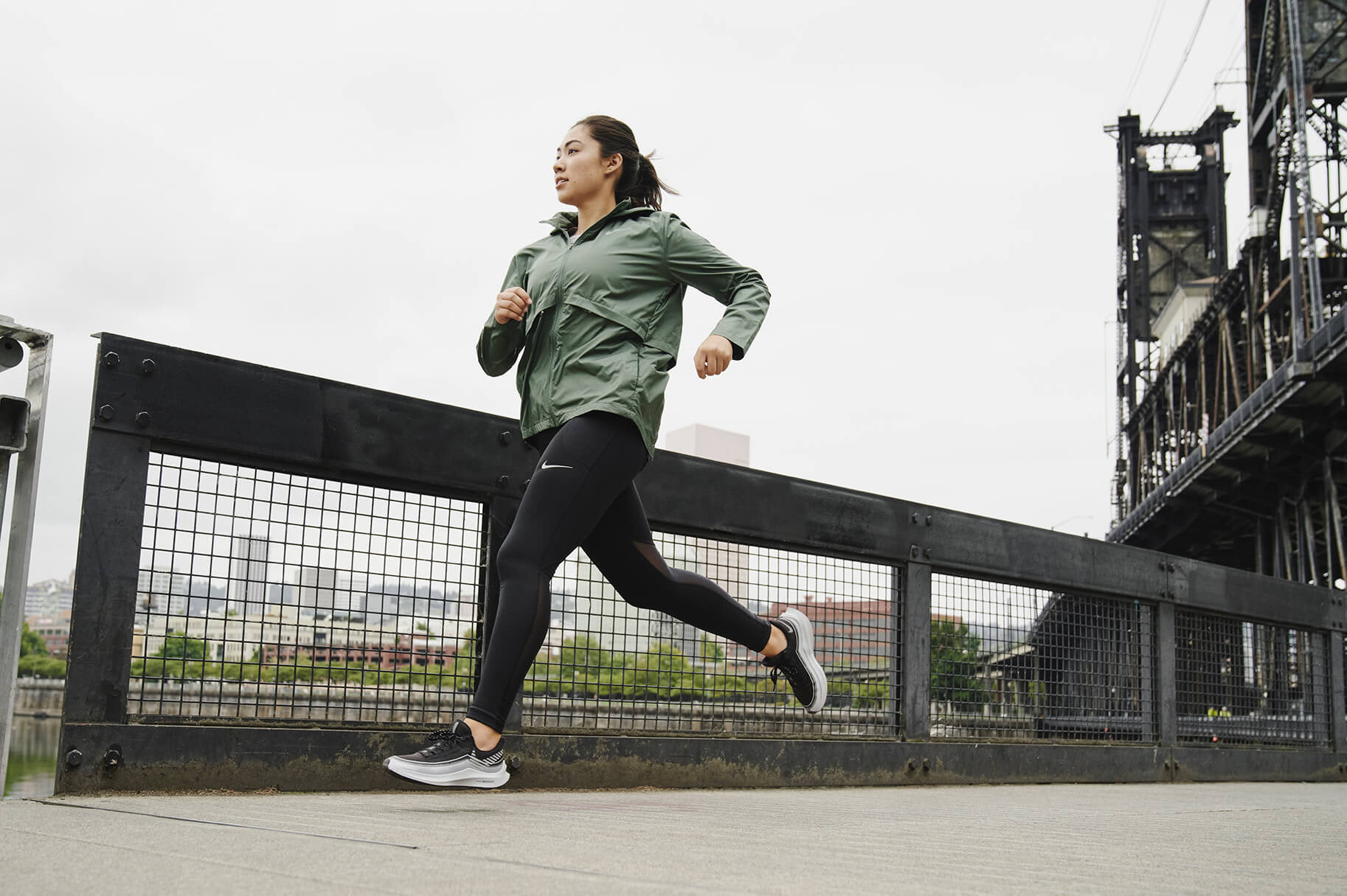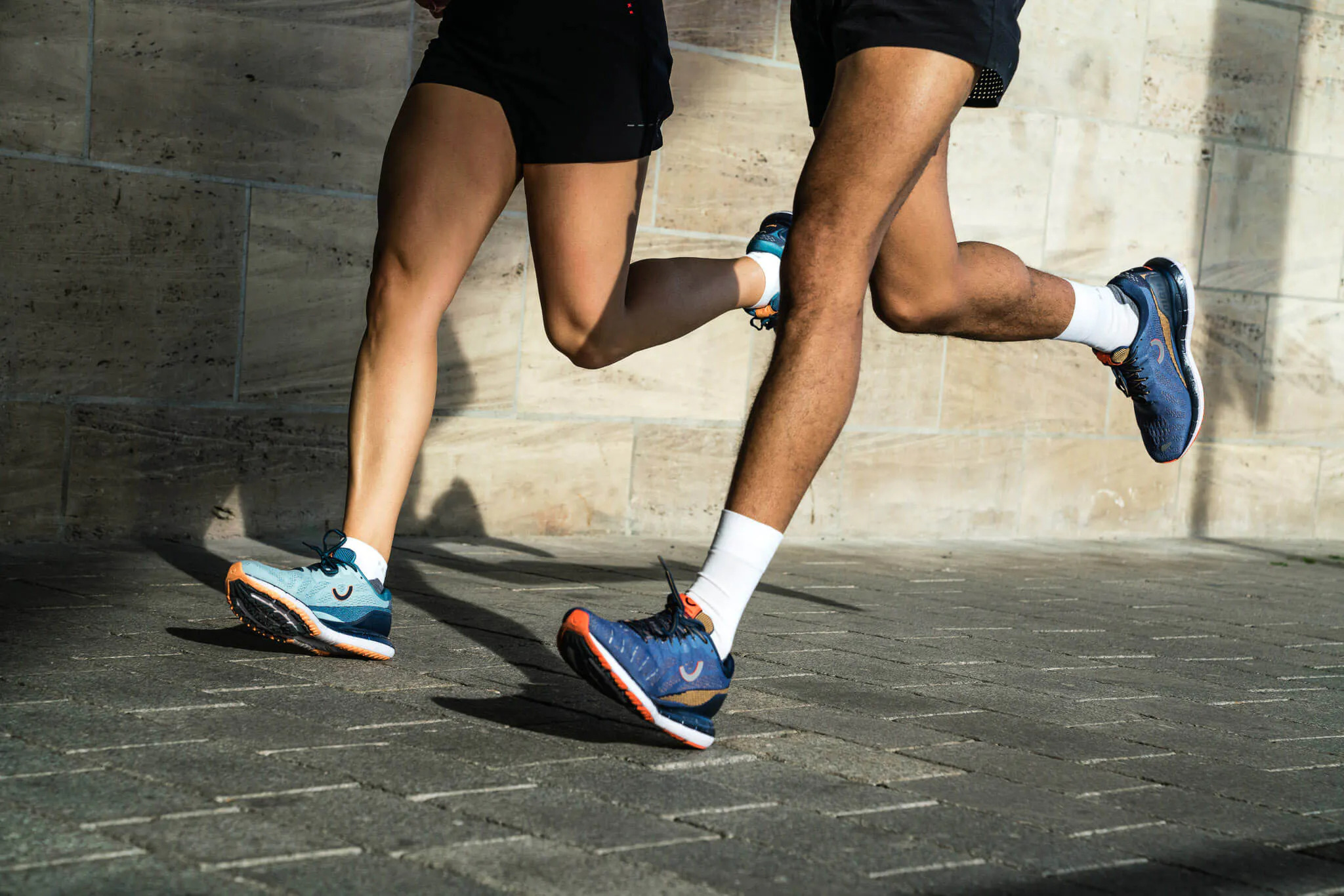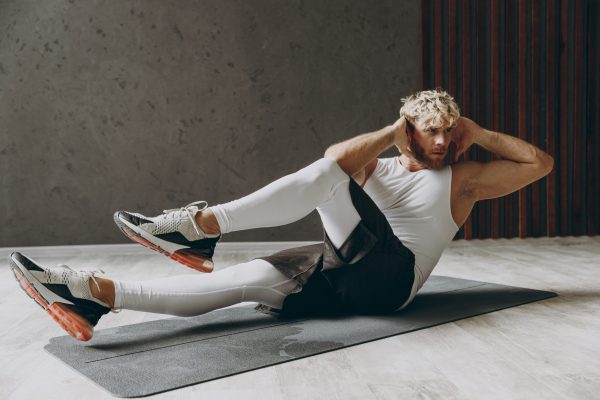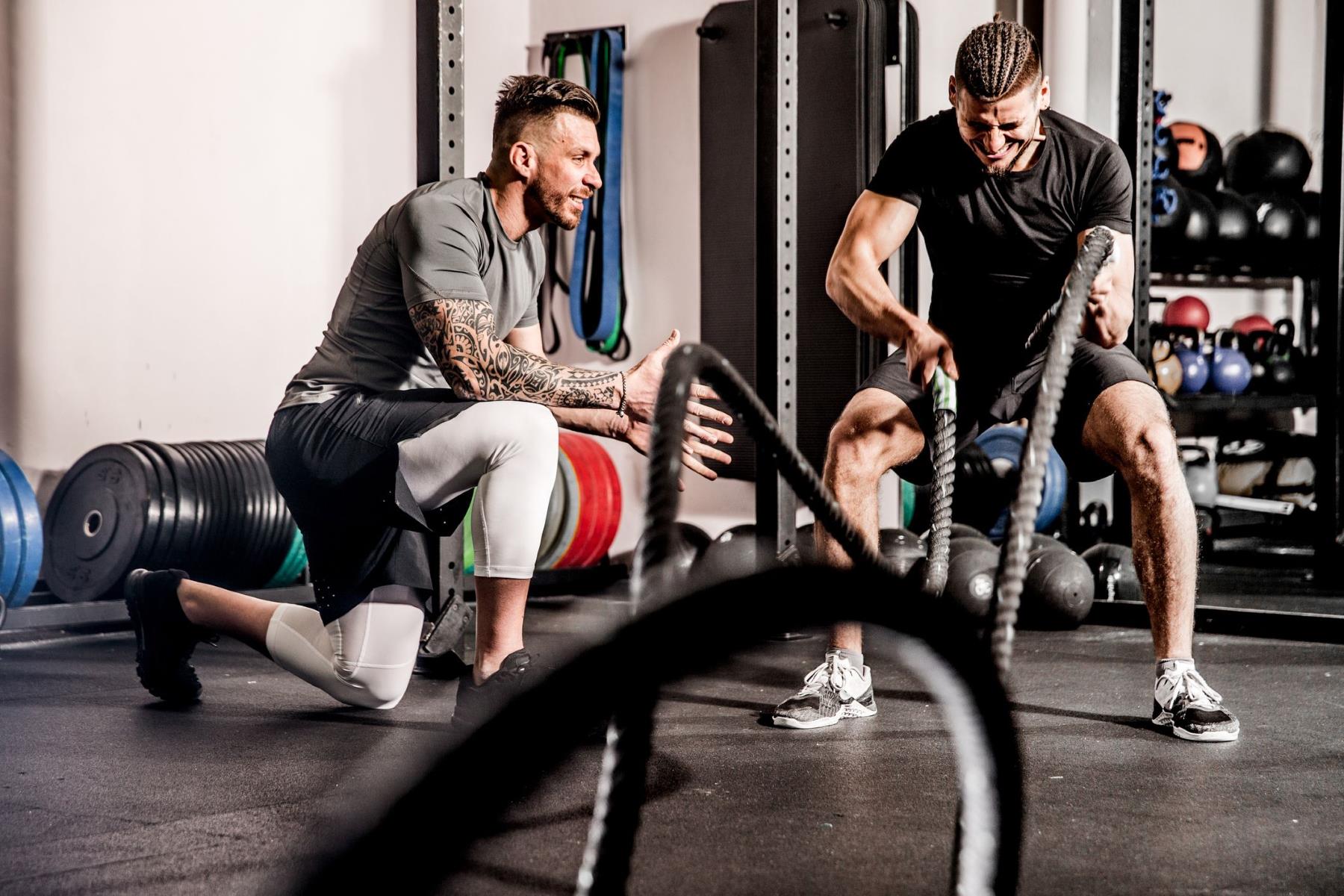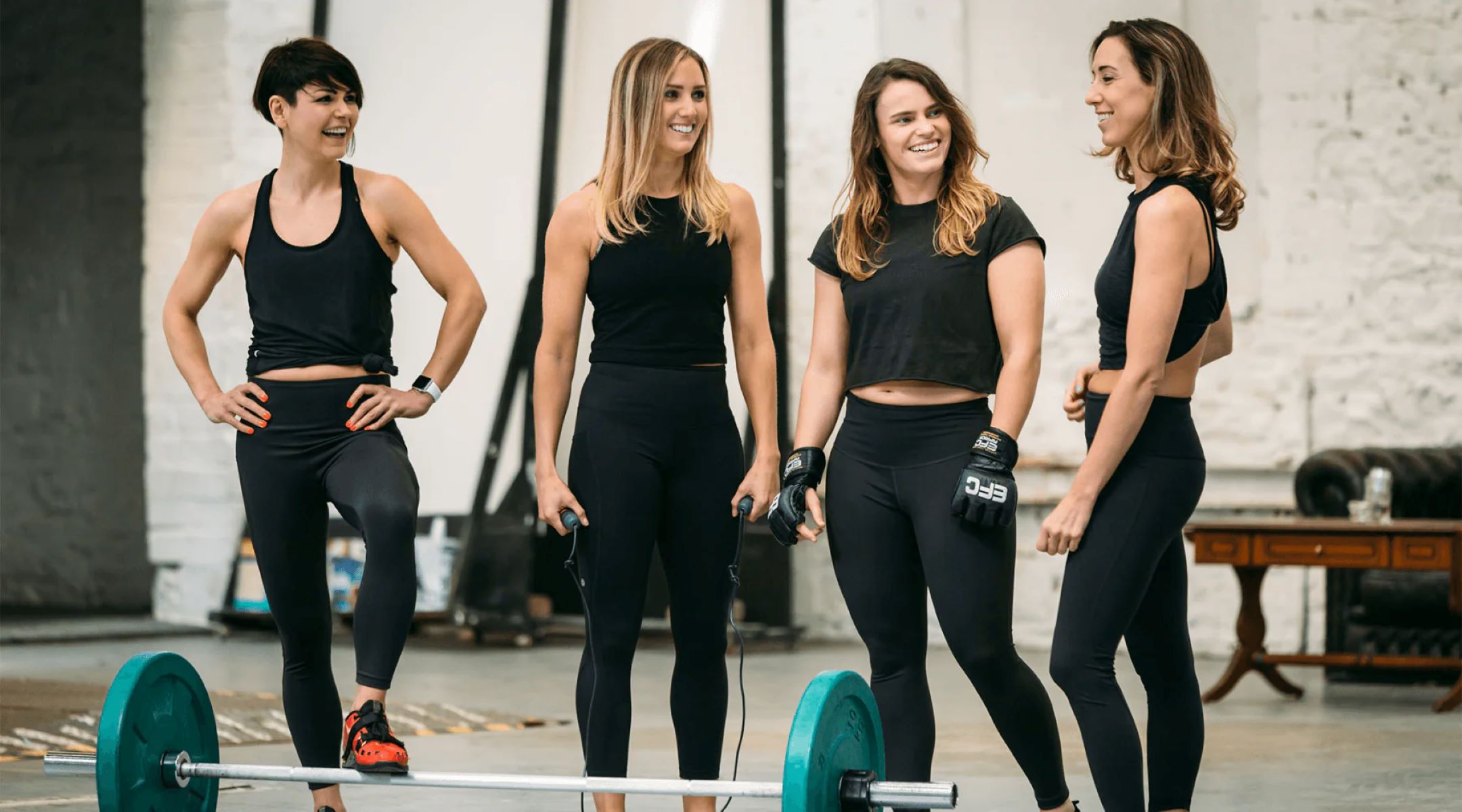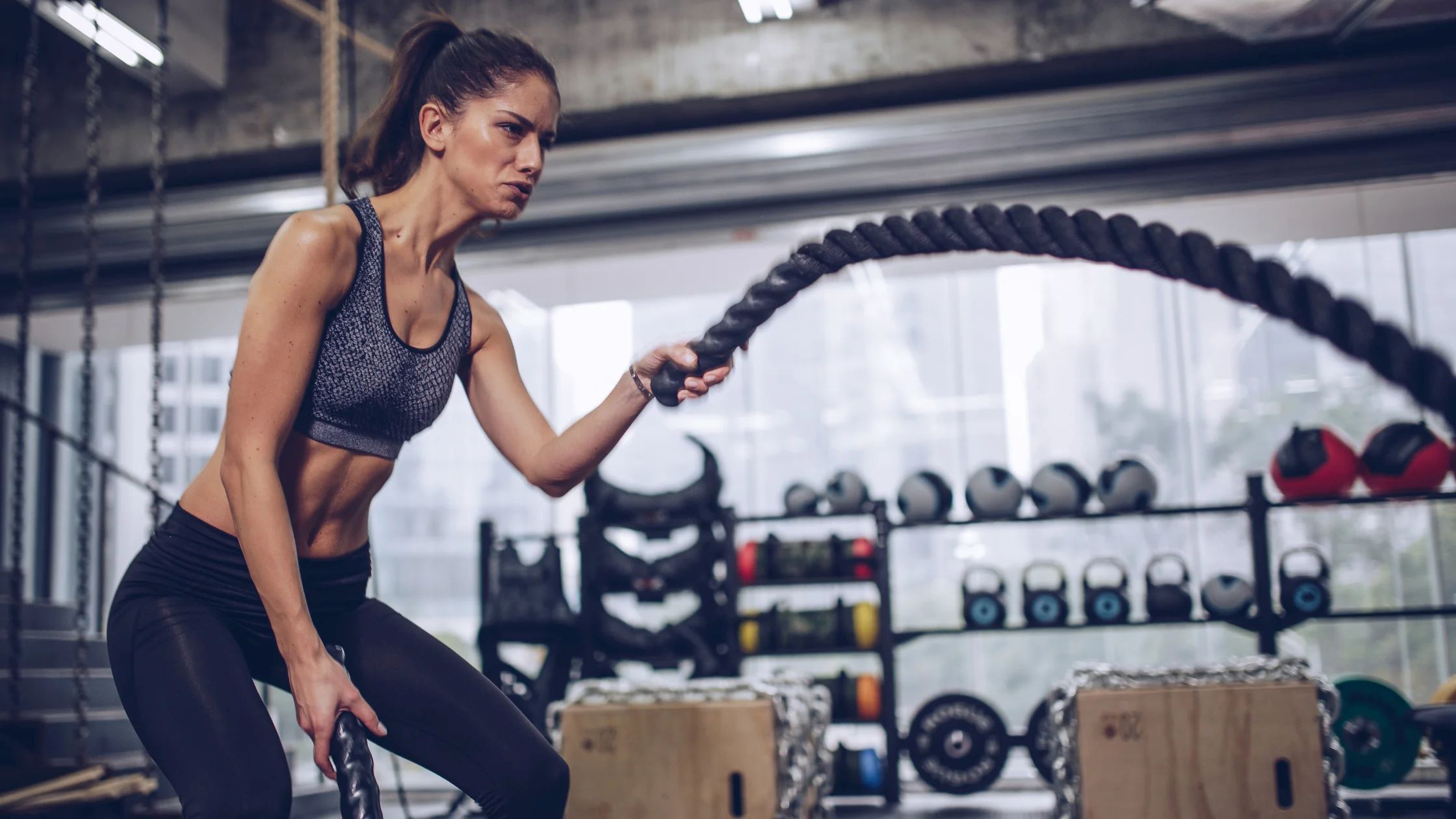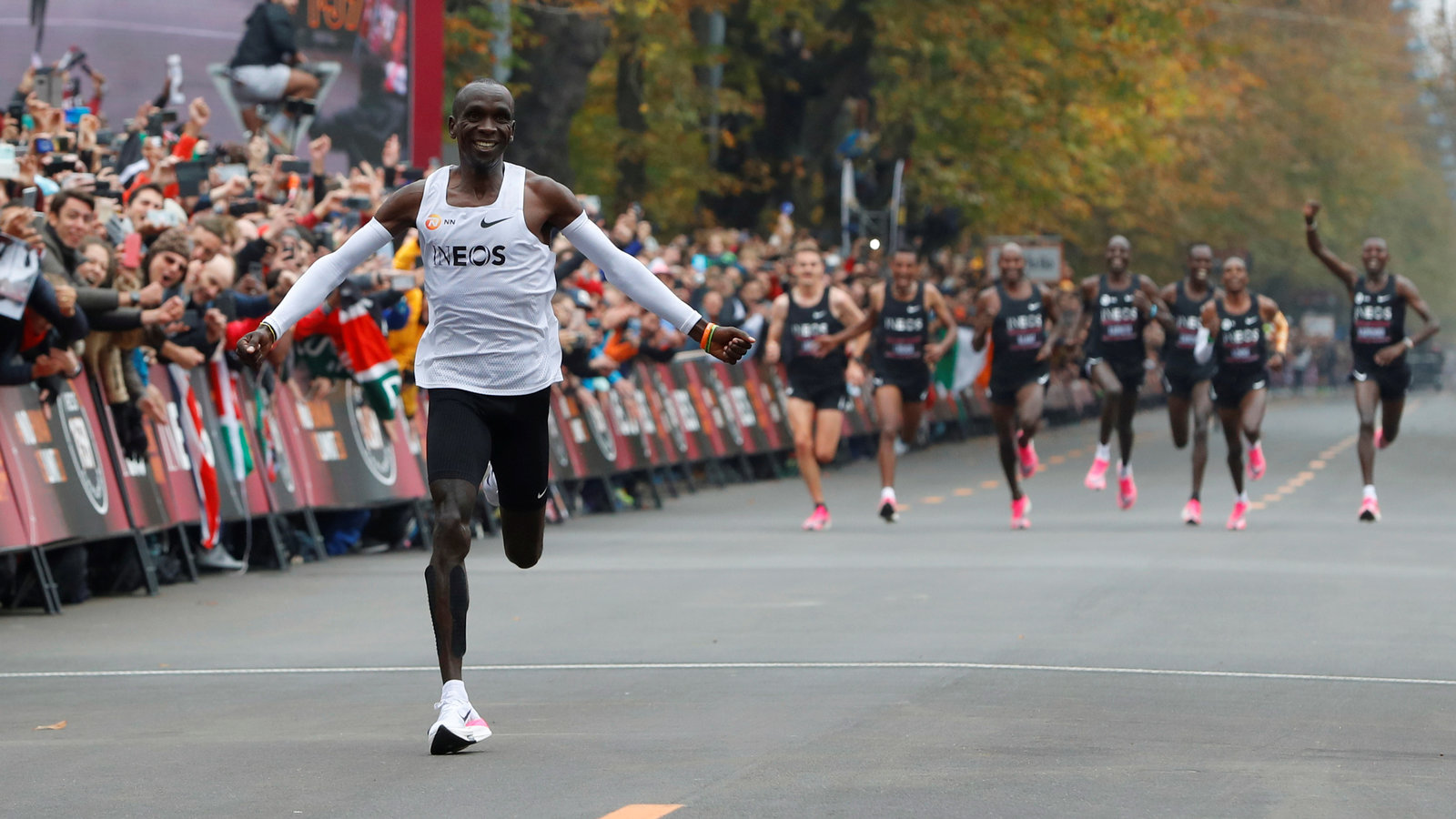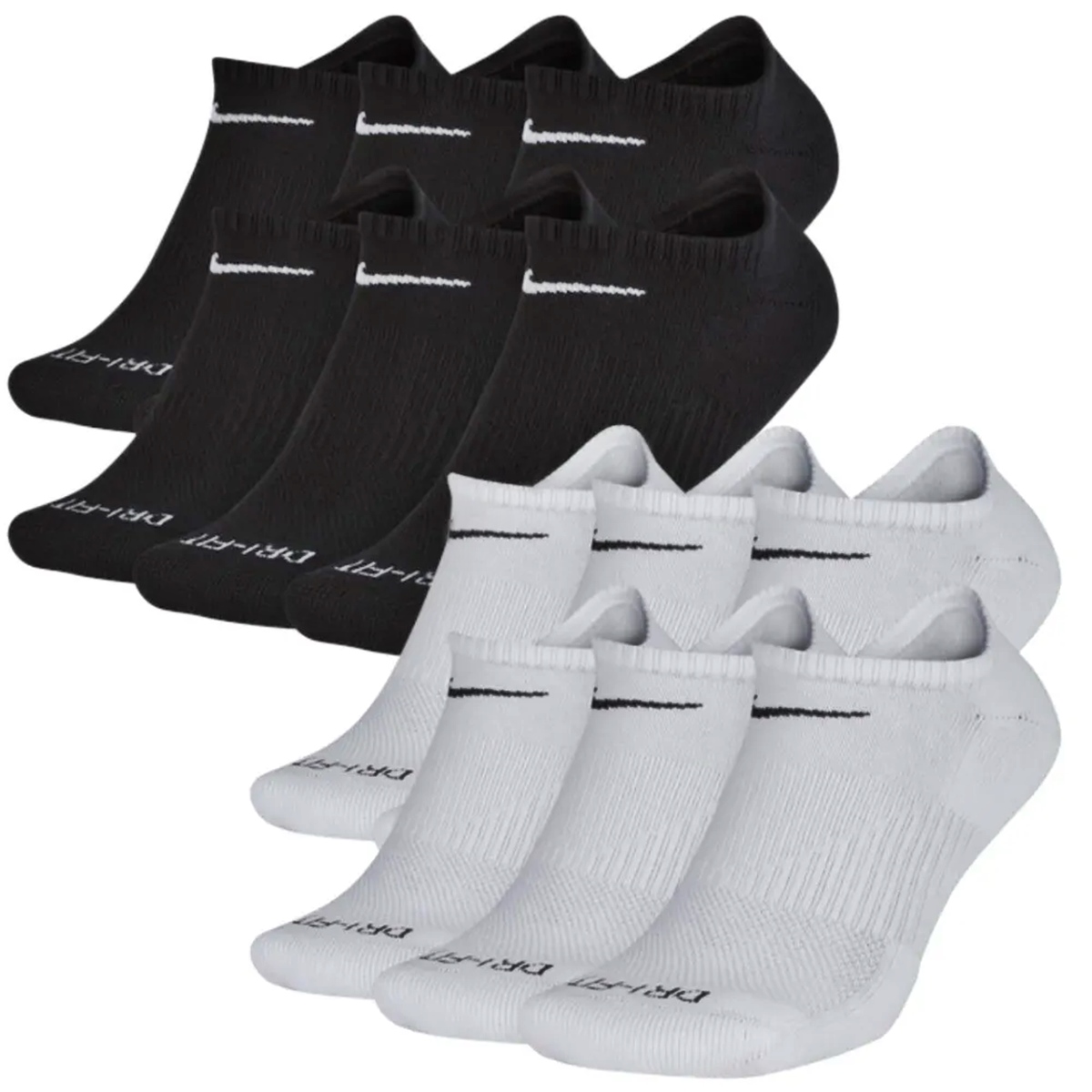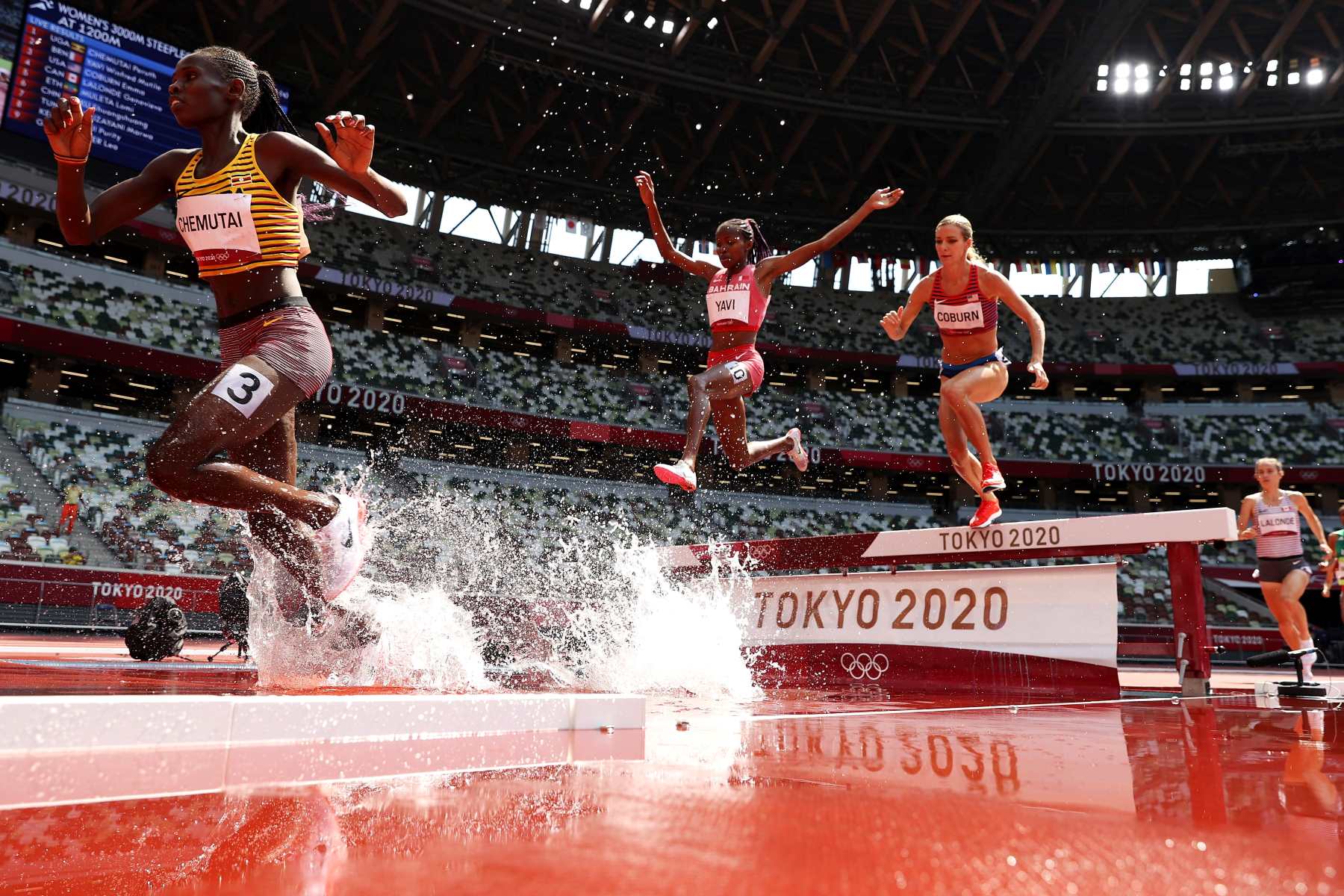Home>Misc>Featured>What Is The Difference Between Mens And Womens Running Shoes
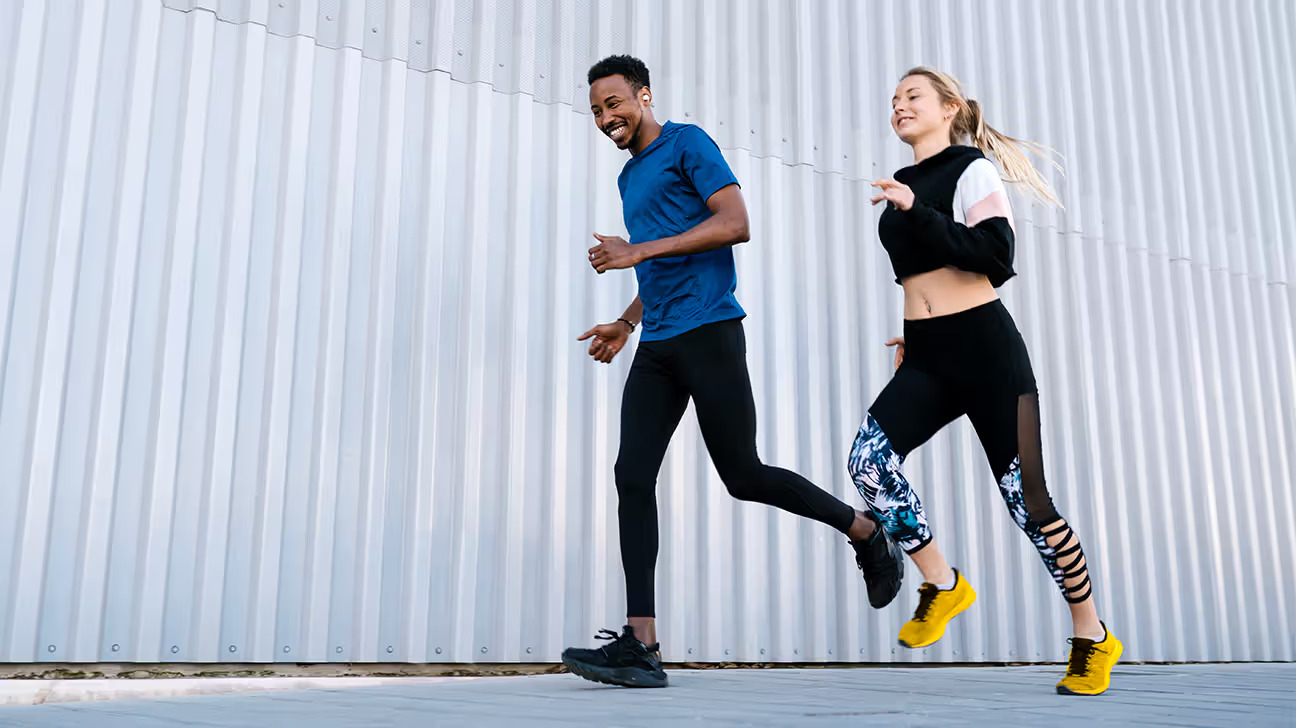

Featured
What Is The Difference Between Mens And Womens Running Shoes
Modified: May 22, 2024
Discover the key differences between men's and women's running shoes. Explore our featured collection for the perfect fit and performance.
Introduction
Running is a popular form of exercise for both men and women. It provides numerous health benefits and allows individuals to stay fit and active. However, when it comes to choosing the right running shoes, there are some important differences between men’s and women’s options that should be taken into consideration.
The design and construction of running shoes can vary based on the specific needs and biomechanics of different genders. It’s not just about the aesthetics, but also about creating a shoe that provides optimal comfort, support, and performance for each gender’s unique anatomy. These differences can have a significant impact on the fit, feel, and functionality of the shoes.
In this article, we will explore the various factors that differentiate men’s and women’s running shoes. From the design and construction to the size and fit, cushioning, support and stability, weight, color and style options, availability, and marketing, understanding these distinctions will help both men and women make informed decisions when selecting their running shoes.
So whether you’re a seasoned runner or just starting out, read on to discover the important nuances between men’s and women’s running shoes, and how these differences can affect your running experience.
Design and Construction
The design and construction of running shoes play a crucial role in determining their performance and comfort. While the overall structure of men’s and women’s running shoes may seem similar at first glance, there are some notable differences that cater to the specific anatomical needs of each gender.
One of the key distinctions in design is the shoe last. The last is the shape around which the shoe is constructed. Men’s running shoes typically have a wider last to accommodate the broader shape of the male foot, while women’s running shoes have a narrower last to provide a snug fit for the narrower contours of the female foot.
In terms of construction, women’s running shoes often feature lighter and softer materials compared to men’s shoes. This is because women generally have lower body mass and lighter frames, so their shoes are built to provide the necessary support and cushioning without unnecessary weight. On the other hand, men’s shoes are typically constructed with sturdier materials to accommodate their higher body mass and provide enhanced durability.
Additionally, the placement and design of cushioning and support features may differ between men’s and women’s running shoes. Women’s shoes often have extra cushioning in the forefoot area to alleviate pressure on the toes, as women’s feet tend to have a higher arch and narrower toe box. Men’s shoes, on the other hand, may have added support in the heel to address the typically heavier landing patterns of male runners.
The gender-specific designs and constructions of running shoes ensure that both men and women can enjoy optimal comfort, fit, and performance. By taking into account the unique anatomical differences, these shoes are designed to provide the necessary support and stability that cater to the specific biomechanical needs of each gender. Whether you’re a man or a woman, choosing a shoe that is specifically designed for your gender can greatly enhance your running experience.
Shoe Lasts
When it comes to running shoes, the shape of the shoe last is an important factor that determines the fit and comfort of the shoe. The shoe last refers to the mold or shape around which the shoe is built. Men’s and women’s running shoes have different shoe lasts to accommodate the unique anatomical differences between male and female feet.
In general, men’s shoe lasts are wider and have a roomier fit to accommodate the broader shape of the male foot. This is because men tend to have wider feet and a higher volume. The wider last allows for more space in the forefoot and toe box, providing a comfortable fit and minimizing the risk of rubbing or discomfort during a run. Additionally, the wider last can also enhance stability for male runners.
On the other hand, women’s shoe lasts are narrower and have a more snug fit to better match the contours of the female foot. Women generally have narrower feet, especially in the heel and midfoot areas. By using a narrower last, women’s running shoes ensure a secure and supportive fit without any excess movement or slippage. This can help prevent blisters and improve overall stability and control.
It is important to note that shoe lasts not only differ in width but also in volume and arch shape. Women’s shoe lasts often have a lower arch shape compared to men’s lasts, as women tend to have higher arches. This allows for better arch support and alignment, reducing the risk of overpronation or underpronation during a run.
When choosing running shoes, it is essential to consider your specific foot shape and anatomy. While some men may have narrower feet and some women may have wider feet, the general differences in shoe lasts provide a starting point in selecting the right shoe. Trying on different pairs and considering the specific features and technologies can help you find a shoe that aligns with your foot shape and provides the optimal fit and comfort for your runs.
Size and Fit
When it comes to running shoes, getting the right size and fit is essential for a comfortable and injury-free running experience. While men’s and women’s running shoes generally follow the same sizing scale, there are some important considerations that differ between the two.
One key difference is the width of the shoe. Women’s running shoes are typically available in a narrower width option, allowing for a better fit for those with narrower feet. This narrower fit can help prevent the foot from sliding around inside the shoe and reduce the risk of rubbing or discomfort.
Another factor to consider is the sizing itself. Women’s running shoes typically run smaller compared to men’s. For example, a women’s size 8 may be equivalent to a men’s size 6.5. It’s important to refer to the manufacturer’s size chart and guidelines to ensure you select the correct size for your gender.
Additionally, it’s important to consider the unique biomechanics and foot shape differences between men and women. Men generally have wider forefeet, while women may have a narrower heel or a higher arch. As a result, men’s running shoes may provide more room in the forefoot area, while women’s shoes may offer a more secure fit around the heel and midfoot.
It’s crucial to try on running shoes and assess the fit before making a purchase, regardless of gender. Pay attention to how the shoes feel in the toe box, midfoot, and heel areas. The shoes should provide a snug yet comfortable fit without any excessive tightness or pressure points.
Remember that finding the right size and fit may also require trying on different brands and models. Each shoe brand has its own unique sizing and fit characteristics. So, don’t be discouraged if your usual size doesn’t fit perfectly in a particular brand. Experimentation and taking the time to find the perfect fit is worth the effort to ensure an enjoyable and injury-free running experience.
Cushioning
Cushioning is a crucial aspect of running shoes as it provides shock absorption and protects the feet and joints from the impact of each stride. The amount and type of cushioning can vary between men’s and women’s running shoes, taking into account the unique biomechanics and body compositions of each gender.
Women’s running shoes often feature softer cushioning compared to men’s shoes. This is because women typically have lower body mass and lighter frames, resulting in less force exerted on the shoes with each step. Softer cushioning materials provide enhanced comfort and cushioning without adding unnecessary weight to the shoe.
On the other hand, men’s running shoes may have slightly firmer cushioning to accommodate their higher body mass and offer enhanced support and stability. Firmer cushioning materials can help maintain the integrity of the shoe and prevent excessive compression, providing a more responsive and supportive feel for male runners.
In addition to the overall cushioning level, the placement of cushioning can also differ between men’s and women’s running shoes. In general, women’s shoes tend to have additional cushioning in the forefoot area. This is because women’s feet often have a higher arch and narrower toe box, which can put more pressure on the front of the foot during running. The extra cushioning in the forefoot helps to alleviate this pressure and provide a more comfortable feel during the toe-off phase of the stride.
Ultimately, finding the right amount and type of cushioning is a personal preference, and it may vary depending on factors such as running style, surface, and distance. It’s important to try on different shoes and experience the cushioning firsthand to determine what feels most comfortable and supportive for your individual needs. Whether you prefer a plush, cloud-like feel or a more responsive and firm cushioning, finding the right balance will help optimize your running performance and protect your feet and joints from potential injuries.
Support and Stability
Support and stability are crucial factors to consider when choosing running shoes, as they help prevent injuries and maintain proper alignment during the running stride. While both men’s and women’s running shoes prioritize support and stability, there are some differences in design and features that cater to the unique biomechanical needs of each gender.
Women’s running shoes often have additional arch support compared to men’s shoes. This is because women tend to have higher arches that require extra support to maintain proper foot alignment and reduce the risk of overpronation or excessive inward rolling of the foot during running.
On the other hand, men’s running shoes may feature additional support in the heel area. Men generally have a heavier landing pattern compared to women due to their higher body mass. The added support in the heel helps to attenuate the impact forces and provide stability and shock absorption.
Another consideration is the midfoot stability. Women’s running shoes may feature different materials and technologies in the midfoot area to provide a secure and stable lockdown. This is particularly important for women with narrower feet, as it helps prevent any unwanted movement or slippage within the shoe during running.
Both men’s and women’s running shoes often incorporate features such as medial posts or dual-density foam to provide stability and prevent excessive pronation. These features help control the inward rolling of the foot and maintain proper alignment during the running gait cycle.
When choosing running shoes, it’s essential to assess how supportive and stable they feel during a run. Pay attention to how the shoe fits around the arch, heel, and midfoot areas. The shoe should provide a secure and supported feel without any excessive movement or discomfort.
Additionally, consider your specific biomechanics and running style. If you tend to overpronate or have a higher arch, look for shoes that offer specific support and stability features to address these needs. Trying on different shoes and consulting with a knowledgeable salesperson or sports professional can also help guide you in finding the right shoes that provide optimal support and stability for your individual needs.
Weight
The weight of running shoes can have a significant impact on performance, agility, and overall comfort. Both men’s and women’s running shoes are designed with different weight considerations, taking into account the specific needs and preferences of each gender.
In general, women’s running shoes tend to be lighter compared to men’s shoes. This is because women typically have lower body mass and lighter frames, requiring less material and support to provide the necessary comfort and performance. The lighter weight of women’s shoes can contribute to a more effortless and agile running experience, allowing for quicker foot turnover and reducing the strain on the lower body.
On the other hand, men’s running shoes are often slightly heavier to accommodate their higher body mass and provide enhanced stability and durability. The additional weight can offer a more grounded feel during running, especially for male runners who have a heavier impact when their feet hit the ground. The extra weight can also provide a sense of stability and reassurance, particularly when running on uneven surfaces or challenging terrains.
It’s important to note that the weight of running shoes can vary depending on various factors, including the brand, style, and features. Some shoes may prioritize lightweight design, while others may prioritize cushioning or additional support, resulting in slightly heavier shoes.
When choosing running shoes, consider your personal preferences and running needs. If you prioritize speed and agility, a lighter shoe may be more suitable. However, if you prefer a more substantial and stable feel, a slightly heavier shoe may provide the desired support. Trying on different shoes and assessing how they feel on your feet during a run can help you find the right balance between weight and performance.
Remember that the weight of the shoe is just one aspect to consider. It’s important to prioritize overall fit, comfort, and support when choosing running shoes, as these factors can have a greater impact on your running performance and injury prevention than weight alone.
Color and Style Options
When it comes to running shoes, color and style options may not affect the performance or functionality of the shoe, but they do play a significant role in personal preference and individual style. Both men’s and women’s running shoes offer a wide range of color and style options to suit different tastes and fashion preferences.
In recent years, running shoe manufacturers have recognized the importance of offering diverse color options for both genders. While traditionally, women’s running shoes may have featured more vibrant and colorful designs, there is now a greater emphasis on providing a variety of color options for both men and women. Some brands even offer gender-neutral colorways that can be appealing to a wide range of runners.
Alongside color, style options also vary between men’s and women’s running shoes. Women’s shoes often feature more streamlined and sleek designs, incorporating softer lines and feminine accents. On the other hand, men’s shoes may have a more robust and athletic appearance with bolder patterns and details.
It’s worth noting that color and style options can be subjective and may not be a priority for everyone. Some runners may prioritize performance and functionality over aesthetics, while others enjoy expressing their personality and unique style through their choice of running shoes.
Ultimately, the color and style of running shoes are an opportunity for self-expression and can contribute to an individual’s motivation and confidence during runs. When selecting running shoes, consider your personal style preferences and how the color and design of the shoe make you feel. Choose a shoe that resonates with you and aligns with your own unique personality and running journey.
While color and style options may not affect the actual performance of the shoe, feeling good in your running shoes can enhance your overall running experience and make your workouts more enjoyable.
Availability and Marketing
When it comes to the availability and marketing of running shoes, there can be some differences between men’s and women’s options. These differences can stem from various factors, including market demand, brand strategies, and consumer preferences.
In terms of availability, there is generally a wider selection of men’s running shoes compared to women’s. This is partly due to historical market trends, as men have traditionally been the dominant consumer base for athletic shoes. As a result, shoe manufacturers and retailers tend to allocate more resources and inventory to cater to the demand for men’s shoes.
However, in recent years, there has been a growing recognition of the importance of providing diverse options for both genders. Many shoe brands now offer an extensive range of women’s running shoes, addressing the specific needs and preferences of female runners. This shift reflects the increasing participation of women in running and the acknowledgment of their influence in the athletic footwear market.
When it comes to marketing, shoe brands often promote men’s and women’s running shoes differently. Advertising and promotional campaigns may highlight specific features and technologies that appeal to each gender. For example, women’s shoe ads may focus on factors like comfort, versatility, and style, while men’s shoe ads may emphasize performance, durability, and cutting-edge technology.
Moreover, marketing strategies may take into account societal and cultural factors to target specific demographic groups. Shoe brands may collaborate with athletes and influencers who resonate with their target audience to create relatable and inspiring campaigns. By doing so, they aim to connect with consumers on a deeper level and build brand loyalty.
It’s important to note that while there may be differences in availability and marketing strategies, the essential aspects of functionality, comfort, and performance remain the same for both men’s and women’s running shoes. The goal is to provide runners with high-quality footwear that enhances their running experience, regardless of gender.
As the demand for women’s running shoes continues to grow, it’s likely that the availability and marketing strategies will continue to evolve to cater to the changing landscape of the running community. Runners of all genders can expect a wide range of options to choose from, ensuring that they find the perfect shoes to meet their individual needs and preferences.
Conclusion
Choosing the right running shoes is crucial for both men and women to ensure maximum comfort, support, and performance during their runs. Throughout this article, we have explored the various factors that differentiate men’s and women’s running shoes, including design and construction, shoe lasts, size and fit, cushioning, support and stability, weight, color and style options, availability, and marketing. Understanding these distinctions is key to making informed decisions when selecting running shoes.
From the design and construction tailored to the unique anatomical needs of each gender to the consideration of shoe lasts and the importance of finding the right size and fit, every aspect contributes to an optimal running experience. The variation in cushioning allows for customized comfort, and the specific support and stability features address the different biomechanical needs of men and women.
The weight, color, and style options of running shoes may not directly impact performance but can play a role in personal preference, self-expression, and motivation. Additionally, the availability and marketing strategies surrounding men’s and women’s running shoes are evolving to meet the increasing demand and cater to the diverse needs of all runners.
Ultimately, the goal of both men’s and women’s running shoes is to provide high-quality footwear that enhances performance while reducing the risk of injuries. It’s important for individuals to try on different shoes, consider their specific needs and preferences, and consult with experts if required to find the perfect running shoes that align with their unique anatomical, biomechanical, and style requirements.
Whether you’re a man or a woman, finding the right running shoes is a personal journey. By understanding the distinctions between men’s and women’s running shoes, you can make well-informed decisions and choose shoes that support your running goals, maximize your comfort, and help you reach new levels of performance.
